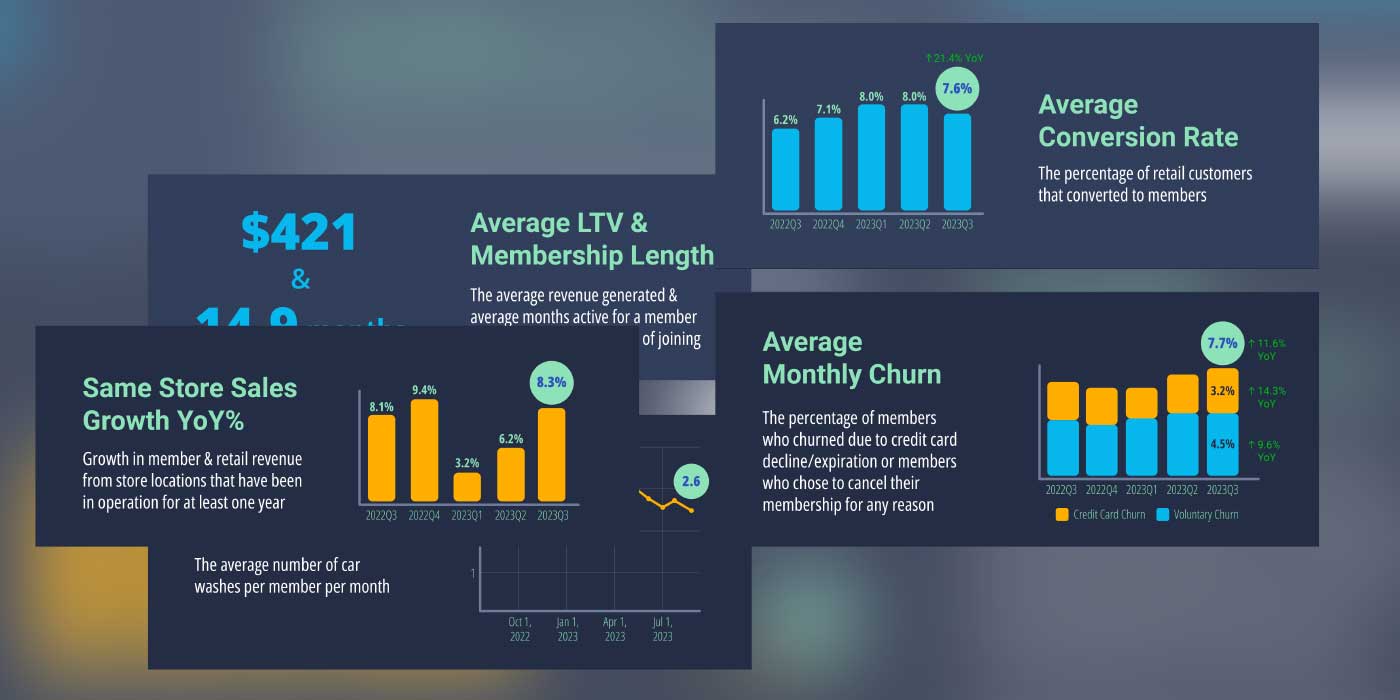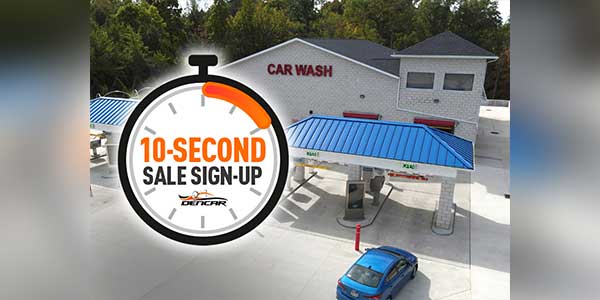Unfortunately, many carwash operators have a limited vision of how software can be utilized in the car care industry. Tracking sales and providing reportage are just the tip of the iceberg when it comes to the latest features in wash software. The reality is that a wide array of options stand ready to assist owners interested in discovering new efficiencies in every phase of small business operation.
By learning more about the software offerings popular in the current market, carwashes can streamline multiple phases of daily activity. Many savvy wash owners have unlocked the advantages of these new options by completing research, software installation and further training. These operators have found that software can administer employee training, maintain fleet and wash club offerings, provide a carwash business app, integrate marketing tools, increase payment security and even incorporate social media functions.
Significant software trends
One of the latest trends in carwash software is License Plate Recognition (LPR), according to Dean Lecky, vice president of sales for Micrologic Associates. Using this recognition technology allows wash sites to gain a better understanding of wash frequency and offer specific services as customers enter the wash. Further, LPR can be used for customers who sign up for monthly wash plans. Using a kiosk for the signup process and capturing the plate number eliminates the need to install an RFID tag, so it reduces the overall cost to run a monthly wash program.
LPR is phasing out RFID technology in the carwash industry, agrees Max Pulcini, director of marketing and communications for EverWash Car Club. LPR-based software can work more efficiently than its RFID counterparts, and it is much easier to set up for both wash operators and customers.
“It can also avoid issues with new vehicles equipped with ‘smart windshields’ or heated windshields, such as the ones used on Tesla car models,” Pulcini continues. “These windshields make it hard for RFID scanners to even read the tags.”
Just as LPR software can integrate with different pay stations and point-of-sale (POS) systems, Pulcini notes that companies have found ways to integrate an app into carwash software as well. This relationship allows for app-based membership to be offered at a wash regardless of the pay station or POS system on-site.
While LPR software is a popular recent trend, another software update on the horizon could prove even more exciting. Pulcini states that, similar to what has become common with mobile phones, facial recognition software and technology are now coming to the carwash industry. “Imagine a world where you simply pull up to a pay station and a camera recognizes your face to open a lift gate and activate a wash,” Pulcini says.
However, potential facial recognition advances are not without challenges, Pulcini explains. When comparing facial recognition to LPR technology, with LPR a customer’s vehicle is the member actually on file. With facial recognition, the customer truly becomes the filed club member. Thus, solutions need to be developed for customers who may share their vehicles with other drivers.
Tackling tunnel collisions
One of the biggest headaches for express and full-serve operators has long been tunnel collisions. Advanced anti-collision systems driven by modern software have reduced this concern, according to Brett Meinberg, sales engineer for DRB Systems. Now, instead of simply tracking and cataloging damage, technology can step in to help prevent collisions.
“Unlike systems of the past, updated collision prevention software identifies and tracks cars all the way through the tunnel and beyond the exit,” Meinberg says. “Instead of knowing where the car should be, this technology knows where each vehicle actually is.” If collision threats are detected, this technology stops the conveyor before damage can occur. This function not only reduces damage claims, but it also prevents downtime and the damage that tunnel collisions can do to a wash’s reputation.
Updated technologies and software have also improved the loading process. Meinberg states that advances in camera technology, in addition to better control over the conveyor and other devices, allow wash operators to load vehicles closer together than ever before without sacrificing safety.
By preventing tunnel loading issues, advanced anti-collision systems enhance daily carwash operations by relieving stress on loaders and other wash employees. Instead of worrying and watching for entrance collision threats, this software allows employees, managers and owners to focus on customer service.
Driving profitability
To drive ultimate profitability, operators must work to fully learn the features that updated software offers. Lecky recommends that owners understand the tools within today’s carwash software to help manage the modern facility and then make adjustments accordingly. If someone chooses not to use the tools that are provided via a software application, then the software cannot help achieve maximum performance.
Instant connectivity to varying revenue channels, full visibility data over a wash’s live operations and customers can drive wash profits as well. Lecky adds that, just as customer demand and expectations have shifted, so too have the expectations of owners and operators. Modern carwash management requires the power to see, control and analyze activity both in real time and over time. Software enables this connectivity.
The most significant change to overall carwash profitability is the recurring revenue that carwashes receive from monthly wash plans, Meinberg states. Advanced POS systems make it easy to set up, run and analyze these plans for optimal profitability, and new technology advances are taking this to the next level.
Here, LPR features mean signing up for a plan and managing it has never been easier, Meinberg continues. Customers can sign up from home by inputting their license plate numbers online, and the license plates will be recognized when the customers pull up at the wash. The ability to use the tag number rather than having to install a tag on the windshield can drive even more volume and profits for updated carwashes.
Related: How to easily manage unlimited wash programs
Pulcini notes that every carwash owner wants a successful membership program, but managing a program with no assistance can be challenging and cumbersome. Software — or in some cases an app — can remove the burden of managing a membership program from the operator. The owner will no longer have to worry about handing out RFID tags or maintaining RFID equipment, and the software can help automate billing, collections and even sales. These features allow operators to focus on producing the cleanest vehicles possible as well as keeping the program’s members and other customers pleased.
“Software that helps operators run a successful membership program drives profitability by helping a wash quickly onboard new members and keep current ones longer,” Pulcini says. “There are only a few things a carwash operator can do that are worse than those old-school coupon booklets.”
Traditional paper-based programs remove an operator’s ability to consistently get revenue from customers, and this is especially true with the traditional, manually tracked programs. Membership is the ultimate loyalty program, and with the proper software, it can be entirely automated, Pulcini states. Automation allows members and operators to manage the membership platform via a mobile app and further relieves on-site labor in a number of ways.
Even with a POS system, if a membership program is not run by automated software, the profitability of the program will rely on management and staff, Pulcini reveals. Staff must set aside time to:
- Sign up new members
- Process billing and cancellations
- Fight disputes
- Take customer service phone calls.
Monitoring sites
Most software systems now give an operator the tools to manage the wash’s labor with real-time statistics reporting which employees are punched in and their hours worked, according to Lecky. In addition, operators can use statistical trends from reporting to help staff the site on days and times when the wash is busiest or slowest. Additional information, such as predictive weather, can further assist with scheduling.
Now, since there are broad ranges of carwash software offerings throughout the industry, an operator can access in-depth data across a range of crucial metrics, Lecky states. Some of these metrics include revenue management, real-time monitoring of the daily car count, labor percentage, predictive analysis and costs associated with running the wash. Using these tools can assist operators in maximizing the amount of revenue that sites can process.
Until recently, operators did not have a great way to access information remotely. Owners generally had to use clunky remote access software to see crucial site data in real time, Meinberg notes. Now that there are web and phone applications that provide this information quickly, multi-site operators can be more proactive in making decisions. The software frees up daily time by allowing the operators to get all data from a single remote source.
Chemistry usage is another area that software can address, Meinberg concludes. Chemical companies have been rolling out new software that gives operators real-time information on chemical levels. The system will alert an owner if a site is low on a particular chemical, so that the product can be filled before running out. By reducing the number of times an employee has to check chemical levels, this technology allows workers to focus instead on offering exceptional customer service.
Phil Ashland is a freelance contributor.














